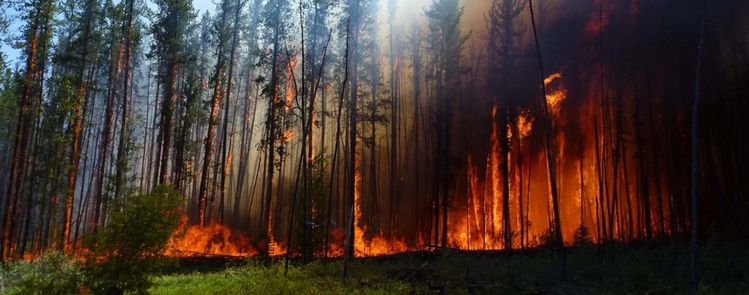DOM and fire

Fire has been an integral part of global biogeochemical cycles ever since vascular plants evolved on the continents. In the more recent history of Earth, humans have used fire extensively as a tool to shape Earth’s vegetation. Wildfires produce a wide suite of black carbon moieties ranging from slightly altered biopolymers, that quickly decompose in soils and waters, to charcoal. Today, global biomass burning generates an approximated 40-250 million tonnes of charcoal every year. Due to its particular chemical and physical properties, charcoal can be preserved over centuries and millennia in soils and sediments. After years of microbial attack in soils, however, charcoal becomes partially soluble, is lost from soils by leaching, and eventually enters the aquatic environment. The global flux of soluble charcoal to the oceans accounts to about 25-28 million tonnes carbon per year, which is ~10% of the global riverine flux of dissolved organic carbon. At the ocean’s surface, dissolved black carbon is susceptible to photo-bleaching, but a fraction survives transport into the dark deep ocean. Fire is now recognized as an important player in global biogeochemical cycles, impacting even the most remote regions of the abyssal ocean. Like fire on land, hydrothermal heating in the ocean’s crust also influences the global carbon cycles, but on time scales of millions of years, rather than millennia.
Current Projects
- MATE
Key publications
Jaffé R, Ding Y, Niggemann J, Vähätalo AV, Campbell J, Dittmar T (2013) Global charcoal mobilization from soils via dissolution and riverine transport to the oceans. Science 340: 345-347 (doi: 10.1126/science.1231476)
Dittmar T, Rezende CE, Manecki M, Niggemann J, Ovalle ARC, Bernardes MC (2012) Continuous flux of dissolved black carbon from a vanished tropical forest biome. Nature Geoscience 5: 618-622 (doi: 10.1038/ngeo1541)
Dittmar T and Paeng J (2009) A heat-induced molecular signature in marine dissolved organic matter. Nature Geoscience 2: 175–179 (doi: 10.1038/ngeo440)

![[Translate to English:]](/f/5/_processed_/3/2/csm_ICBM-Logo-transparent-_91fe1c6774.png)